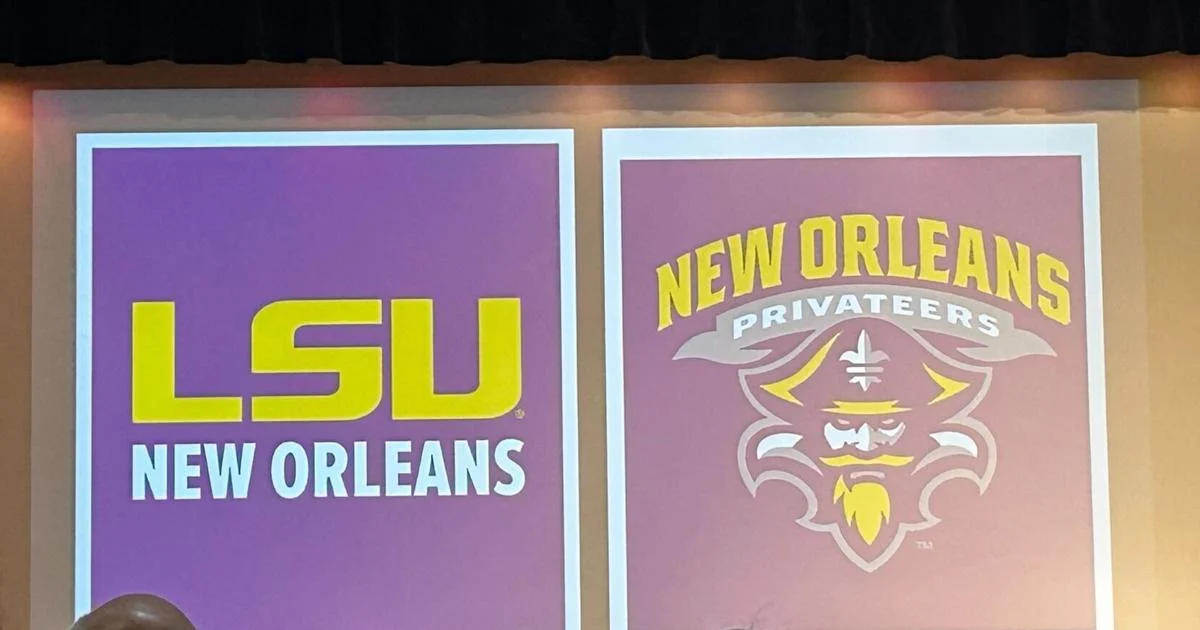Copyright Forbes

Gallup’s latest research shows something many leaders quietly sense: leadership isn’t as aspirational as it used to be. Across generations, fewer employees say they want to move into management. Many are content contributing where they are. I’ve often asked myself—has leadership lost its appeal, or have we simply worn out the idea of what leadership looks like? When I asked Pat Lencioni why, he went straight to motive. Lencioni—best known for The Five Dysfunctions of a Team, one of the most widely applied frameworks in organizational life—has spent decades inside boardrooms helping executive teams confront dysfunction, ego, and fear. “The reason to be a leader,” he told me, “is I am signing up to suffer on behalf of others. Because the personal economics of leadership are not good.” He paused, then added a line that reframed the whole question: “Maybe we don’t want leadership to be cool. We want it to be noble.” That one word—noble—changes how we think about leadership and culture alike. Cool leadership seeks attention. Noble leadership seeks responsibility. Cool culture performs virtue. Noble culture practices it. Across organizations, the same confusion shows up. Many have mastered the optics of authenticity—values statements, empathy campaigns, carefully branded belonging. But real cultures aren’t polished into perfection. They’re built on vulnerability, friction, and truth-telling that costs something. Cool, Power, and the Problem With “Cool Leadership” Lencioni wasn’t using “cool” as a throwaway label. He referenced a University of Arizona cross-cultural study that asked people what “cool” really means. Researchers found that when people call someone cool, they associate it with a few core ideas: adventurous, willing to take risks, hedonistic, and interested in power. MORE FOR YOU In other words, cool is built on self-focus. And is seen as self-serving. If leadership is sold as cool, it draws people who want power and attention more than they want responsibility. Lencioni has seen the result up close. He described years in the Bay Area watching people chase IPOs, fame, and quick exits. “There were a lot of people that should never be in leadership,” he said. “They were trying to be leaders because they wanted to be famous and get rich quick.” That mindset doesn’t just shape individual careers. It seeps into culture. Spit-and-Polish Cultures Polished cultures look perfect on the surface. They shimmer under stage lights but fracture in daylight. They have values written on walls but not etched in habits. Words like integrity or respect appear everywhere until you realize no one is defining what those look like on a Tuesday afternoon when the numbers are down. Lencioni connects that polish directly to the absence of vulnerability. “Vulnerability is raw truth telling,” he told me. It sounds simple, but it cuts against how many leaders have been trained. Present. Control the narrative. Don’t admit weakness. I see versions of this in many organizations. A global company that celebrates “psychological safety” in town halls but quietly punishes dissent in performance reviews. A firm that markets “radical transparency” but pressures employees to stay silent about executive decisions on social media. The posters say one thing; the power dynamics say another. That gap is where trust erodes. Lencioni pointed out that integrity was written on the wall at Enron. “That should tell you something,” he said. It isn’t the word that matters. It’s what leaders are willing to lose to protect it. A few years ago, a CEO I was advising faced exactly that test. One of their biggest clients, responsible for nearly 15% of annual revenue, consistently treated employees and vendors with open disrespect. When the CEO confronted the client’s team, they shrugged it off: “That’s just how we work under pressure.” Every spreadsheet screamed renew the contract. The CEO walked away. It hurt in the short term. Bonuses were cut, quarterly targets missed. But within six months, employee engagement rose significantly. A prospect called and said, “If you’re willing to do that, we want to work with you.” The culture didn’t soften. It hardened into something resilient and self-respecting. That is what a noble culture looks like. Flawed, costly, but faithful. Culture With Edges Many organizations now talk about “authentic culture,” but authenticity has become one of the most misused words in business. Too often it means curated imperfection on a slide deck. A few safe vulnerabilities. A story polished for impact. Real authenticity has edges. It includes the traits that outsiders might find strange or even dysfunctional, yet insiders recognize as essential to how the place really works. Zappos leaned into exuberance and a kind of organized chaos that many traditional leaders would have rejected outright. Tony Hsieh didn’t sand that down. He codified it. Patagonia, under Yvon Chouinard, built a culture that challenges consumerism and growth at any cost. Both cultures repel people who don’t share those convictions. That is a feature, not a flaw. Authentic cultures don’t pretend to be for everyone. They live their difference in full view. The edges do not disappear in the employee handbook. They show up in who gets hired, who gets promoted, which tradeoffs are made, which deals are turned down. Most companies try to “train” culture into something smoother and more universally appealing. In doing that, they lose the sharpness that made it real. Values That Repel Lencioni has long argued that values should unsettle people who don’t belong in a culture. “If someone reads your values and doesn’t see a place for themselves, that’s not failure,” he said. “That’s design.” He believes values should work like that. “Companies need to be very clear around their core values, such that they repel people who don’t fit,” he told me. That requires courage. “They need to be comfortable being brutally intolerant of something,” he said. Not cruel, not dismissive, but honest enough to say: this is not the right place for you. He is equally blunt about why so many value statements feel empty. “I’m not letting you use integrity in your core values,” he often tells CEOs. His reasoning is simple: if no one is prepared to say they are against integrity, it isn’t distinctive. It becomes, in his words, motherhood and apple pie. Employees recognize that. They hear the same phrases everywhere: integrity, excellence, respect, innovation, opportunity. “Younger people are like, ‘But every company says that,’” he told me. The disillusionment that follows is not a rejection of values. It is a rejection of values that don’t cost anything and mean even less. I share that belief. The real test of a culture isn’t how many people it can attract. It is whether it clearly describes a place where some people will thrive and others will feel out of place. Your best people aren’t searching for a generic fit. They are looking for a place that gets them and stretches them. Noble cultures depend on that kind of clarity. They are built to endure, not to please. How Leaders Keep Values Real When I work with executive teams, I tell them that culture cannot be delegated. The moment it gets handed off to HR or a task force, it loses credibility. As Lencioni put it, “If the CEO is ultimately motivated by their own comfort or short-term financial gain or ego, you’re done.” Culture only works when leaders themselves are willing to do the uncomfortable things—hold the mirror, make the hard calls, and live the values even when it hurts. Here’s what that looks like in practice. 1. Audit your values—strip out aspiration and keep what’s true. Every leadership team should put its stated values through an annual truth test. I ask leaders to bring examples—three real decisions that prove a value is alive in the organization. If they can’t, it’s not a value. It’s a slogan. Lencioni uses a similar approach when he works with teams. He asks them three questions: Who are your best people and what makes them great? Who doesn’t fit and why? And what’s true about you as leaders? If your answers don’t line up, you’ve confused aspiration for reality. A noble culture begins with honesty about who you already are. 2. Hire and promote for culture, not charisma. The rulebook for your culture is who you hire, fire, and promote. I tell leaders to write down three observable behaviors that show cultural fit and three that clearly violate it. Then apply that standard relentlessly. Lencioni’s own shorthand—humble, hungry, and smart—remains one of the simplest and most powerful filters. His advice to CEOs is to “scare them with sincerity.” Be brutally clear about what you believe, and invite people to opt out early if it’s not for them. When you do that, the right people stay longer—and the wrong ones never join. 3. Recognize courage, not compliance. Recognition reveals what an organization truly reveres. In noble cultures, it’s the people who take principled risks who should be celebrated—the truth-teller in a meeting, the manager who defends a value at personal cost, the team that walked away from easy revenue because it wasn’t right. If you want courage to thrive, it has to show up in what you measure and reward, not just in what you preach. 4. Retell the stories that cost you something. Every organization has moral artifacts—stories about the moments when it chose conviction over convenience. Retell them. Put them in onboarding decks, all-hands meetings, and strategy sessions. Lencioni reminds leaders that when culture gets real, it usually comes with pain. Those stories of sacrifice, not slogans, become the memory bank that sustains belief. 5. Lead visibly when it’s least convenient. Culture is transmitted more through observation than instruction. The quiet thank-you note, the unexpected walk through a hard-hit department, the apology that admits failure—those are the signals that shape behavior far more than any campaign. Lencioni’s phrase captures it perfectly: “Great leaders don’t need to be famous. They need to be faithful.” Faithfulness, to me, means consistency when no one’s keeping score. The unseen decisions count the most—the ones that reinforce values in the cracks of daily work. That’s how a noble culture takes root: not in slogans or ceremonies, but in leaders who keep showing up the same way, every day. It sounds simple. It isn’t. Faithfulness asks more of leaders than charisma ever will. It is the choice to take on burdens that no one sees. To stay with hard conversations when escape would be easier. To keep shaping a noble culture in line with a set of values that you know will cost you. A noble culture might sound old-fashioned in the age of personal brands and performative leadership. Yet when people talk about the leaders who changed them, they rarely describe stage presence. They remember the decision that put people ahead of optics, the apology that felt real, the moment a leader told the truth when it would have been easier to duck. Culture doesn’t keep score in public. It keeps memory in private. The half-life of those memories is long. In the end, that is where noble leadership shows up—not in what looks cool from a distance, but in what stays standing when the shine wears off. “When people realize that power, fame, and wealth aren’t satisfying,” Lencioni said, “they turn to meaning, purpose, and serving others.” Perhaps leadership hasn’t lost its appeal after all—it’s just returning to where it belongs.



